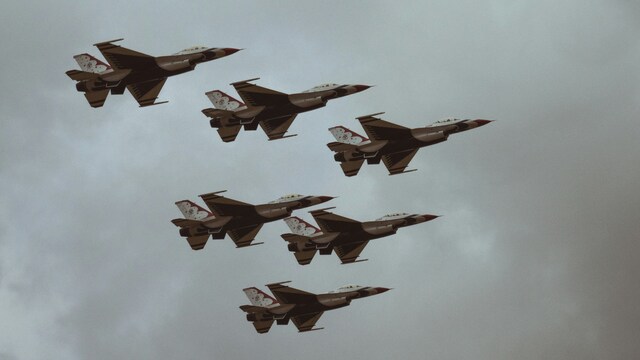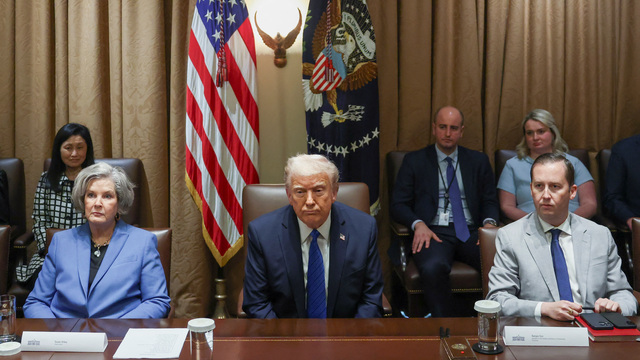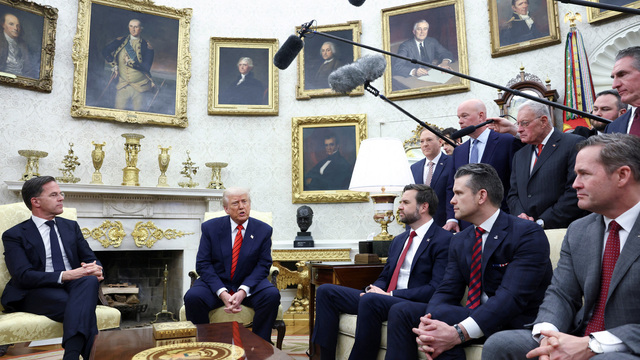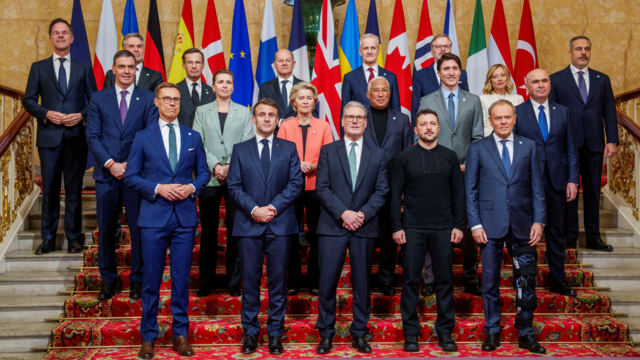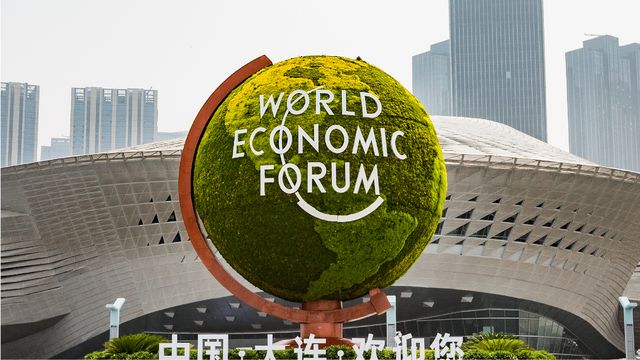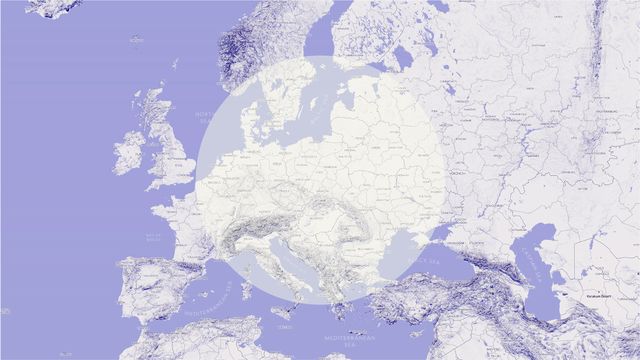10 Years of Eastern Partnership: From Prague to Brussels and How to Proceed?
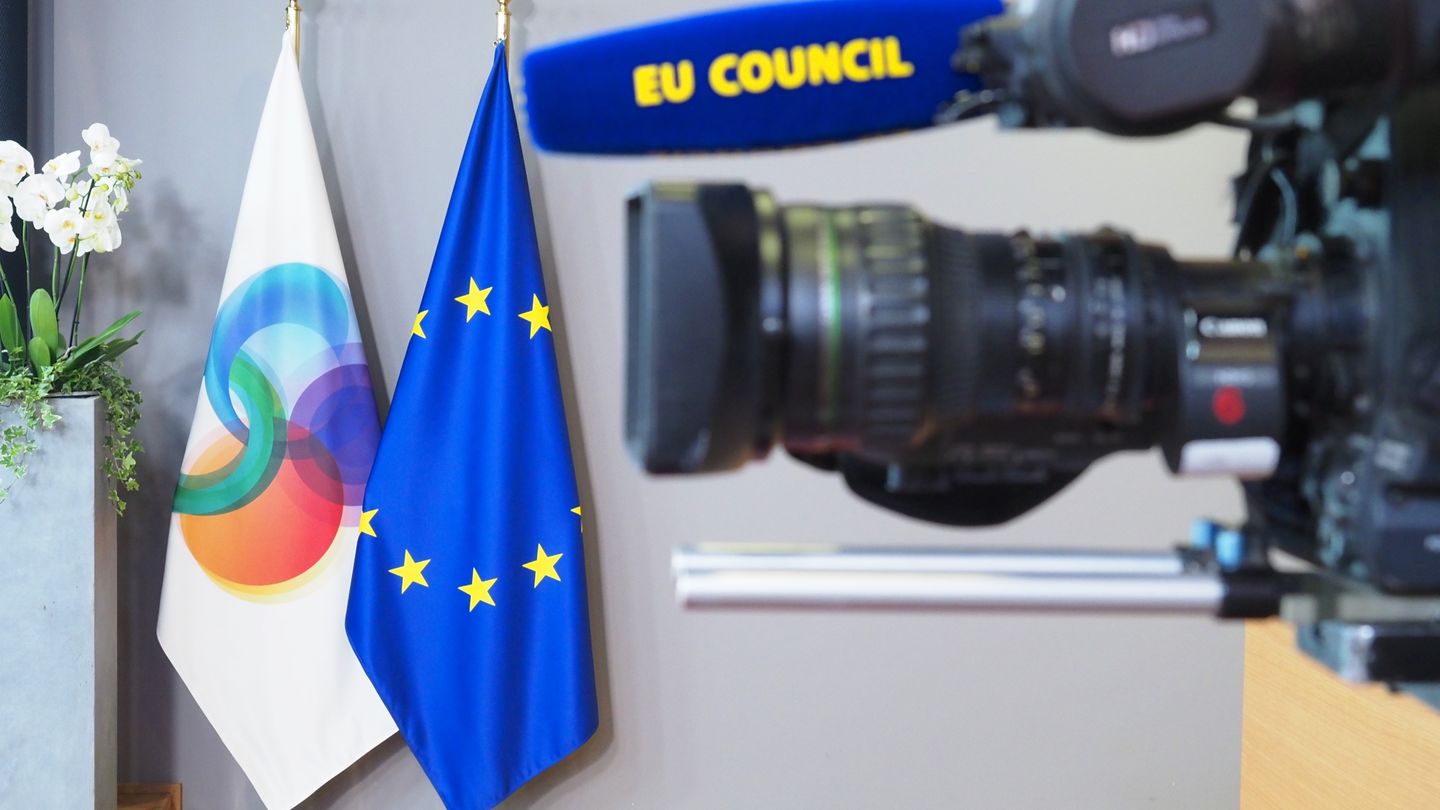
paper
The Eastern Partnership (EaP) policy celebrated its 10th anniversary during the sixth high-level conference in Brussels in May 2019 and it is now undergoing a process of strategic reflection on its future.
Policy recommendations
For the EU
→ The EU should keep the Eastern Partnership high on its agenda beyond 2020 since it will remain a crucial region for the security, stability and prosperity of the European continent. Keeping a special directorate general (DG NEAR) for this agenda illustrates its political importance and keeps the door open to the EU´s enlargement to the region one day.
→ Regarding financial management and maintaining special financial instruments for supporting European democracy, human rights and development of the neighbourhood, the plan to establish a flexible (and necessarily less accountable) single financial instrument in the EU’s external affairs (NDICI) should be dropped. However, a new financial instrument (the so-called Marshall plan for the EaP) should be developed in order to support particularly associated countries of the EU and facilitate/incentivise implementation of the Associated agenda. The principle of more for more (or less for less) should be sustained in the logic of differentiation, a key pillar of the EaP since the beginning.
→ The EU should come up with a new policy document (new 30 Deliverables for 2030) for the period beyond 2020 in order to better incentivise and monitor progress made on the Association agenda and to motivate partner countries in working together for a better and more sustainable future. Climate change and the SDGs should be high on the agenda together with more focus on building resilience, dealing with hybrid threats and security in a wider sense. This, indeed, also includes energy efficiency and provision of energy resources beyond 2020, particularly the Nord Stream 2 debate. Apart from that, closer sectoral integration between the EaP countries and the EU should be promoted, and the Eastern partners put closer to the core of the multispeed Europe.
→ Speaking about security and defence in Europe, the EU should not forget about the frozen conflicts in the post-Soviet space, which keep Eastern Europe in long-term instability and cripple the efforts of EaP countries to come closer together with the EU and NATO. Boosting the EU presence in the region and diplomatic efforts in engaging in the peace talks as well as finding new solutions for old problem would help both the EaP and EU to solve other interrelated issues, such as organised crime, smuggling or migratory flows.
→ The Eastern partners are facing substantial challenges when it comes to the state, society and market transformation. The EU should provide its know-how, financial resources and political support for conducting (often painful) domestic reforms and explaining/selling the necessary steps to the domestic audience. The rule of law and reform of the judiciary should play a prominent role in this regard since they constitute a solid basis for economic development as well as foreign direct investment from the EU. Building on the capacity and professional bureaucratic apparatus, the EU would add value by establishing a specialised academy for EaP officials modelled on the EaP European School in Tbilisi. Socialisation of EaP elites (including from youth and academia by Erasmus+ or fellowship programmes for civil society representatives) should also be promoted by, for example, Twinning and shadowing as well as cooperation with sectoral ministries of individual EU Member States.
→ In order to intensify the multilateral framework of the EaP, the EU should provide more substantial benefits and stronger incentives for partner countries to build trust and promote cooperation among themselves as well as with the EU. As for the EU member states, they should more clearly divide the labour and get involved in the multilateral dimension where they see their added value (modelled on the NATO´s framework leading nations). Stronger empowerment of EaP countries to come up with their own initiatives and work for a common good should be encouraged. This means also to make better use of the existing tools and instruments (working groups, platforms and flagship initiatives) as well as their more appropriate adjustment to the needs of EaP countries. The principle of inclusion of the EaP should stay in place.
→ The EU should strengthen its outreach and strategic communication to and about the EaP and build upon its good name in the Eastern neighbourhood. Stronger cooperation with EaP countries in the domain of disinformation, fighting Russian propaganda and cyber threats can be mutually beneficial. Support to independent media and its capacity, including core funding for start-ups and small media outlets, is a crucial point in the debate. It is worth empowering the EU´s existing tools and instruments, such as the Stratcom Task Force East or the EU missions in the EaP countries working on these issues.
→ While negotiating with the Eastern partners and delivering concrete benefits of the partnership to the populations of EaP countries, the EU should not forget about its own norms and values, especially when negotiating with authoritarian countries, such as Azerbaijan and Belarus. In all six countries, but especially the two, the EU should resolutely support the civil society as a crucial player and partner in implementing the association agenda and 20 Deliverables for 2020. Particularly in the case of Azerbaijan and Belarus, the EU should be doing more to empower the local players and fragmented activism in order to strengthen civic and media plurality in the country. The European Endowment for Democracy plays a particularly significant role in this regard that should be further promoted.
For V4
→ The Visegrad Group should prioritise the Eastern Partnership again and return to its previous positive role played in the region. It should become a credible defender of the EaP countries in the EU decision-making process and their Euro-Atlantic orientation. The final resolution of the dispute between Hungary and Ukraine under the Czech presidency of the V4 should be the first step to restoring the role model image of the V4 in Eastern Europe as well as the EU itself. Domestic work (e.g. on the rule of law, etc.) in the V4 itself has to be done first. Multiplication with other EU Member States as part of the V4+ logic, e.g with the Baltic states, can be mutually beneficial.
→ Restoration of the “V4Ukraine” type of activities in Eastern Europe, active involvement in the region and providing know-how on political, social and economic transformation can add value from the point of view of Central Europe. “V4EaP” programmes and activities should be intensified, including high-level meetings of foreign and prime ministers. In Eastern Europe, there are tendencies to look for good solutions from the CEE, e.g. related to decentralisation, economic development or capacity building. Twinning programmes and stronger mutual cooperation, as well as practical exchanges, can offer a good opportunity to socialise elites and contribute to their training and capacity development.
For Czechia
→ Czechia should continue to be a constructive player and bridge-builder among states supporting the Eastern Partnership at the highest European level after 2020. It should actively contribute to the EaP review process starting in autumn this year and ideally, come up with its own new ideas and initiatives, including with help of the civil society. These could then be launched during its EU Presidency in 2022 as part of the EaP Summit in Prague, in order to make it a real success.
→ Czechia should, through its outreach and efficient strategic communication in Eastern Europe, continue building its good reputation and promoting its foreign policy priorities in the region. Foreign minister Petříček´s recent visits to Georgia or Ukraine can serve as a good example of this practice.
→ During 2019/20, Czechia presides over the Visegrad Group and under the motto “V4 Reasonable Europe” it wants, among other things, to contribute to reconciling different approaches and opinions. In this sense, the longterm political conflict between Hungary and Ukraine, from which Ukraine's new president wants to extricate himself, offers an interesting opportunity and easy gains for both sides, possibly facilitated by the V4 presidency.
→ The Czech Constitutional Court should make use of its presidency of the Conference of European Constitutional Courts and positively contribute to the restoration of constitutional order in Moldova as well as other Eastern partner countries, such as Armenia or Ukraine, that are struggling with reform of the judiciary and rule of law in general.
Taking stock of the Ten-Year-Anniversary of Eastern partnership
In May 2009, it was the then Czech EU presidency that together with Poland and Sweden brought the Eastern Partnership to life after a similar French initiative for the Mediterranean region. The EaP emerged as a counterweight to the Union for the Mediterranean with the aim of differentiating between “European neighbours” and “neighbours of Europe”, as famously delineated by the former Polish foreign minister Radek Sikorski. This push against the ‘one-size-fits-all’ approach represented by the European Neighbourhood Policy was strongly advocated by the EU Member States from Central and Eastern Europe (CEE), which naturally have closer connections with their neighbours to the east. This informal group of ‘friends of the EaP’ argued in favour of closer and differentiated bilateral relations between the EU and EaP countries, embodied in the Association Agreements (AAs), including the Deep and Comprehensive Free Trade Agreements (DCFTAs), and visa-free regimes that stood at the core of the EaP since its beginning, together with the inclusive multilateral framework of cooperation symbolised by regular summits of heads of states held every two years.
In 2014, it was the illegal Russian annexation of Ukraine’s Crimea and the City of Sevastopol as well as aggression in the East of Ukraine, which dragged Eastern Europe into chaos and instability that persists until today. However, in the meantime, Ukraine, Georgia and Moldova were able to successfully conclude their AAs, DCFTAs and visa-free regimes, and Armenia its CEPA agreement.12 Therefore, the six EaP countries were effectively divided into smaller groups of associated states (Ukraine, Georgia and Moldova), members of the Russia-led Eurasian Economic Union (Belarus and Armenia) and Azerbaijan, pursuing its own path of special relations with the EU as well as the Russian Federation.3
The last couple of years of the EaP can be generally described as a process of squaring the circle of matching different expectations of partner countries with possibilities on the EU´s side. This is most notably connected to the issue of future membership of the EU, but also a general willingness of the EU Member States to commit to stronger integration with the Eastern partners. The reason for this complicated state of play is the general atmosphere in mutual relations which expects the delivery of concrete measures first, especially from the associate countries that have concluded their AAs and DCFTAs requiring a number of reforms in political, economic and social spheres. In addition, we can observe an upward tendency to ‘EaP fatigue’ accompanied by pro-Russian sentiments of some of the EU Member States, which does not help to move mutual relations forward. The Netherlands can be considered as a vivid example of a state seriously complicating EU-Ukraine relations after the non-binding referendum in April 2015, in which Dutch voters by a small margin refused the AA with Ukraine.4
Furthermore, the situation is also not easy in the partner countries themselves. The three associated countries have their own deep structural problems stemming from the character of their political systems, the role of oligarchy as well as complicated domestic transformations into fully-fledged liberal democracies with established rule of law and free markets. In the case of the biggest and most significant, Ukraine, this involves the ongoing transition of power to the hands of president Zelenskyi and his team after the parliamentary elections on 21 July 2019. His administration will have an unprecedented say in both legislative and executive branches of power, yet will face immense challenges of deeply rooted corruption, the rule of law and reform of the judiciary as well as conflict in the East and peace talks with Russia. Already now, before presenting the reform agenda and its sequencing, popular expectations for the new administration are immense. Georgia, as the most advanced country of the region in terms of its reform process, suffers from a power consolidation by the Georgian Dream led by Bidzina Ivanishvili and political partisanship, problems with the rule of law or limited freedom of media combined with deep public frustration at the ruling elites. Finally, Moldova – the former EaP front-runner – stuck until recently under the tight control of a local oligarch Vladimir Plahotniuc, is also going through a painful process of political and elite transformation and is dealing with deeply rooted corruption, clientelism and societal polarisation over foreign policy issues. Indeed, it is not an easy situation for the new coalition of Maia Sandu supported by the pro-Russian Socialist Party of Igor Dodon that should be in charge of rebuilding the state and creating a New
Moldova. The three other partner countries have their own limitations in relations with the EU given by their (geo)political choices. In any case, both Belarus and Azerbaijan have serious issues with democracy, rule of law, freedom of speech or civil society, which are under pressure from the state authorities,6 while Armenia is currently going through turbulent post-revolutionary developments and transition of power to the new government led by Nikol Pashinyan, or rather rebuilding its state and all its pillars.
As a result of this, some EU Member States, particularly the old ones, feel tired of the complicated situation in Eastern Europe, including Russian aggression in the shared neighbourhood and troublesome domestic situations in most of the partner countries. On top of that, the EU itself seems to be facing numerous crises of its own. Therefore, some EU Member States are informally refusing to recognise the European aspirations of associated countries, while others push for recognition of specific Russian interests in Eastern Europe or to promote stronger cooperation with Russia and its Eurasian Economic Union (EEU), which is not viable from an economic point of view. This, for example, materialised during the High-level conference celebrating the 10 year-anniversary of the EaP that did not have a final statement due to mutual disagreements between the EaP countries.
Eastern Partnership Today
Today, the European Union's eastern policy could be characterized as a highly ambitious and dynamically developing multilateral platform for relations with the six partner countries, offering each of the countries of Eastern Europe and the South Caucasus an opportunity to strengthen bilateral relations with the EU. Ukraine, Georgia and Moldova have the ambition to further integrate into EU structures in the form of the so-called Four Unions, meaning digital, energy, Schengen and customs unions. This plan was presented by the European Parliament and endorsed by the civil society sector that both realise the importance of further differentiation and incentivisation of future integration into the Western structures. New ways, including the so-called Marshall Plan for the EaP, should be found to promote economic growth and the popularity of often painful domestic reforms in the associated countries of the EU.
Apart from the associated members, Armenia, which last year went through a democratic (and velvet!) transition of power into the hands of opposition leader Nikola Pashinyan, also concluded its own comprehensive agreement with the EU, which is compatible with its membership of the EEU led by Russia. So, although Armenia is not on the same level as the three associated countries, its ambition to modernize and strengthen relations with the EU at the expense of dependence on Russia is more than evident. Another interesting case is Belarus, which, after 25 years of Lukashenko's authoritarian rule and a complicated relationship with the EU, has opened its arms to the West in an effort to (again) balance a powerful and assertive eastern neighbour and attract Western investment in the slowing Belarusian economy. At the Brussels high-level conference, this was well reflected by the Minister of Foreign Affairs, Vladimir Makei, who mentioned an interest in stronger cooperation with the EBRD and EIB, but also a willingness to continue the dialogue on humanitarian issues, including human rights and the death penalty, which the EU has long criticized. At the same time, Makei said his country suffered most because of the confrontation between the West and Russia. Today, the EU is negotiating with Belarus not only on the so-called priority points and economic assistance but also on visa facilitation and strengthening people-topeople contacts. Last but not least, the Eastern Partnership policy also includes Azerbaijan, with which the EU also has long-standing complicated relations due to its repressive regime and the oppression of civil society and virtually any opposition to President Aliev's ruling clan. However, even in this case, the EU is seeking ways to engage with this complicated partner, and even to negotiate a strategic agreement on mutual relations, including, inter alia, the issues of energy and transport in a geopolitically difficult region.
Multilateral dimension
Thus, in the bilateral relations, we can see the EU's pragmatism, based on the EU's global strategy on foreign and security policy, as well as the interest to negotiate, often with difficult partners, some kind of positive agenda for EaP citizens. All of this to come closer to the original goal of the ENP to bring stability, prosperity and security in the (Eastern) neighbourhood. At the same time, the differing ambitions of EaP countries reinforce the “more for more” (and “less for less”) principle that the EU started to apply after 2011, and which was transformed by the 2015 revision of the ENP policy, especially in the context of implementation of the Association Agenda.
The state of the recently restarted multilateral dimension was well characterized by the Ukrainian vice-premier for European integration, Ivanna Klympush-Tsintsadze, who said that the EaP for her country is a multilateral platform for achieving bilateral goals. Despite the EU's vision of building stronger cooperation and trust between partner countries themselves, the EaP countries have always sought to build their own bilateral relations with the Union first. This contradiction in terms has been maintained throughout the 10 year-history of the EaP and can be expected to persist in the upcoming decade. However, it is also clear that most partners appreciate the multilateral framework of cooperation and benefit to a large degree from joint meetings and work on flagship initiatives as well as the working groups and platforms. Co-operation in the four priority areas (democracy and good governance, economy, interconnection and transport as well as people-topeople contacts) has been embraced by some EU Member States (including the Czech Republic and Poland in the area of local governance or Estonia with digitization), as well as by the partner countries themselves, which benefit from it and the transfer of European know-how.
In addition, there is, of course, the symbolic dimension, which consists of building trust and contacts between elites (particularly significant in the case of Armenia and Azerbaijan), for which meetings around one table are still not something obvious. Furthermore, contrary to the original expectations of the EU that Ukraine could become a leader among the five (significantly smaller) members of the partnership, this vision has never materialised, and Ukraine has always used its position, having a common voice within the EaP, solely for its own benefit. For this reason, there is great scope for improving and streamlining the multilateral dimension, exchanging experience with implementation of the Association Agenda or the challenges of cooperation with the EU (and, of course, also Russia). In contrast to bilateral relations, multilateral relations with the EU have lagged significantly in the past decade and will need to be actively built up and invested in with appropriate efforts and financial resources in the future.
Eastern Partnership Tomorrow
An important milestone for the Eastern Partnership will be the year 2020 when the 20-point reform agenda for 2020 will be over. In addition, the next year is also a significant moment for the associated countries and their bilateral agendas, which in several respects will reach the moment when mutual relations should also move further. This is particularly true for Ukraine but to some extent Georgia and Moldova. This means that after 2020, both the EU and EaP countries will have to come up with a new agenda for their relationship. However, as elaborated earlier, the idea of further enlargement of Eastern European countries into the EU is not particularly popular. This implies that if the EaP is not to be forgotten, it must gain new traction and initiative in the form of new agenda points or other specific incentives that will further move the relationship. In the past, the European Parliament presented one of the routes, in the form of the “EaP+”, which should reward particularly well-functioning associated countries and motivate them to move towards a European integration process. Also, the form of the “Four Unions" offers an interesting journey especially when compared with the state of play of the European Economic Area, or the currently negotiated EU-UK partnership agreement. However, the policy of small integration steps and more technical (and low-level) initiatives with which the EU majority will not have a problem seems to be the most realistic. At least, if judged from the moods of EU Member States and in the context of the currently ongoing change in the European establishment in Brussels. Such areas may include, for example, cooperation in the field of youth and people-to-people (also including cross-border) contacts and academia, strategic communication and strengthening resilience, combating hybrid threats and Russian disinformation, etc. The last two areas are particularly relevant for the Eastern partners, who are concerned about the aggressive behaviour of Russia as well as wider security issues. So, we will likely see a continuation of compromise rhetoric on closer integration and final membership of the Eastern European countries in the EU, as well as new areas of cooperation that will pragmatically benefit both the EU and the EaP countries.
In the context of finding a new strategic vision and agenda for the EaP beyond 2020, the recent Polish proposals for a three-way strengthening of relations with the Eastern Partners, in the institutional, sectoral and legal alignment, can be taken as some inspiration. During the May high-level conference in Brussels, the Polish Minister of Foreign Affairs Czaputowicz outlined the possibility of setting up a permanent EaP secretariat to deal with European partners and strengthen the representation of Eastern European countries in Brussels. In addition, the Minister proposed the ad-hoc involvement of associated countries in meetings of sectoral ministers or the establishment of a free trade area in the eastern neighbourhood following the example of CEFTA among V4 countries in the 1990s, which stood at the beginning of the accession of Central European countries to the EU. As the fourth possible contribution, Czaputowicz mentioned enhanced political dialogue and solidarity between the EU and the Eastern partners in the context of Russian aggression against Ukraine, Georgia, Moldova and pressure on the rest of the Eastern partners. In this context, relations between the EU and Russia will play a very important role, especially in Moldova, which is undergoing a painful political transition of power into the hands of pro-European ACUM8 supported by proRussian socialists President Dodon.
The Polish proposals are worth critically assessing and especially the stronger institutionalisation as well as sectoral cooperation should be implemented. This is especially true when combined with ideas from the EU EaP Civil Society Forum,9 which refer to a gradual end of the asymmetric position between the EU and partner countries or abandoning the approach of ‘sticks and carrots’, that is the principle of conditionality, in the long-term. Stronger ownership of the policy by EaP countries, strengthening the role of civil society in the process of implementing the Association Agenda, and the decision-making process in partner countries, or setting targets and benchmarks beyond 2020 should be on the agenda of the EaP after 2020 too. Most of all, however, a strong value-based approach and the political significance of the EaP for the EU institutions should be maintained, including keeping the financial instruments operating in the region today.
What Is Here for the EU?
All the problems in the Eastern neighbourhood, including migration, organised crime, money-laundering or deeper security problems, are likely to stay with us in the next decade too. Therefore, the EU must try to make progress on making the Eastern neighbourhood more stable, secure and prosperous. Following its interests and strategic vision for the region might prevent out-migration, stop braindrain and eventually also increase the resilience of these societies towards internal and external challenges. For that, the EU should do several important things and especially keep working for the region´s and its own benefit. This means to be engaged, dedicate financial resources as well as provide know-how are recipes for modernisation and implementation of the association agenda. In that sense, more incentives in terms of further diversification (the “more-for-more” principle) and additional benefits should be on the table. However, at the same time, the EU should continue working on development of regional cooperation and building trust among the six Eastern partner countries, especially the ones facing military confrontation with each other. There are several important policy areas, in which the EU can add value and promote regional cooperation and working more closely together. Among them, academic, people-to-people contacts, and cross-border and youth exchanges (e.g. European Solidarity Corps, Erasmus+, Horizon 2020 etc.) should be more financially supported and facilitated, in order to better understand each other, or exchange ideas on the most modern technologies, among other things. Establishment of the EaP School in Tbilisi was a good start for the youth. Second, infrastructure and stronger involvement in the area of transport should be supported both financially and from a business perspective. The EBRD and EIN can play a very important role in this sense, also related to energy security and building societal resilience in this area. Third, the area of security has traditionally been high on the list of needs of Eastern partner countries. However, this is not a one-way street too. Having experience of direct military and/or hybrid confrontation with the Russian Federation, it can be extremely beneficial for the EU (and NATO) to better understand the current character of warfare in Eastern Europe. Therefore, the stronger involvement of EaP countries in the Centre of Excellency dealing with cybersecurity and hybrid threats in Helsinki can be a positive step. Building up societal resilience in Eastern Europe as well as the EU Member States can only benefit both of our societies. Finally, climate change and protection of the environment or waste management and recycling are big topics in the EU today, Eastern Europe still needs to invest significant resources in this area. Here again, the EU can help to improve this area for a better and more sustainable common future.
Thanks to the EU’s pragmatic approach towards the partner countries, their citizens are finally in the core of the policy, now focused more on people-topeople contacts or enhancing living standards in the eastern neighbourhood.10 Pragmatism and honest discussion delivering concrete and new solutions should be welcomed and encouraged within the EaP in the future. This is especially true for implementation of the AA agenda with the three associated countries of the European Union – Ukraine, Georgia and Moldova. However, this flexibility and pragmatism cannot come at the expense of EU values and basic principles, such as
democracy, human rights or rule of law, as was previously condemned by the EaP Civil Society Forum,11 because no explicit goal aiming at human rights or promotion of democracy was included in the Commission’s plan for Deliverables 2020. Putting less emphasis on EU values would only mean losing guidance for the EU’s behaviour in its eastern neighbourhood, which could harm the Union’s reputation. This has already happened in Moldova, where a rhetorically proEuropean government was after 2009 well-known for its corruption and misuse of power. The EU cannot afford to gamble with its basic values and principles, as all its steps are carefully being observed by the autocratic regimes around Eurasia, desperately waiting for compromises in the above-mentioned areas, which would be immediately abused for their own benefit. In this way, the EU can hope to combine its pragmatic approach to the EaP whilst maintaining its own credibility and requiring partner countries to deliver on reform actions, thus giving the policy a new impetus in the years to come.
Therefore, what is really needed is not only the goal-driven agenda but also real and measurable progress on the ground going beyond rhetoric and ‘shiny’ infographics. In concrete terms, clear timetables of reform steps, setting ambitious and measurable targets as well as adjusting the agenda to the concrete reality on the ground should be applied to Deliverables 2030 to maximise the impact of this reform agenda. The negotiations between the European Commission and individual EaP countries should also be made as transparent as possible to involve public oversight and avoid compromises on EU values and principles, especially in association with the current EU talks with Azerbaijan on the ‘Strategic Modernisation Partnership Agreement’.
V4EaP?
The V4´s state of play on the Eastern Partnership today lies in dissonance and differing views on the Russo-Ukrainian conflict, especially as seen from Budapest, Bratislava and Prague. For a long time, Poland had the position of a leader of the pro-EaP camp. However, this situation has changed due to bilateral conflicts with Ukraine, which started after the Polish government of Law and Justice came to power in October 2015 and started isolating themselves on the EU level. The party decided to open painful historical debates with its eastern neighbour. The ongoing Hungarian diplomatic offensive against Ukraine related to education and more recently also language law, including promotion of Ukrainian language in the educational system, is another case in point.1213 Nevertheless, in the past, these were the V4 countries that successfully negotiated the launching of the EaP together with Sweden and significantly contributed to its development not only through keeping the policy high on the EU’s agenda during their EU presidencies but also in several other ways. In 2011, for example, the V4 launched a programme called “V4EaP” that aimed at supporting contacts within academia, civil society, but also democracy and human rights advocates in the partner countries. The Visegrad Group (and the International Visegrad Fund) also played an important role in political, economic and social transformations of the EaP and engaged in the region through their development and humanitarian programmes. Moreover, the annual meetings between V4 and EaP foreign ministers contributed to informationsharing and policy coordination as well as keeping the policy highly visible by inviting EU officials involved in the EaP agenda. Finally, after 2015 the “V4 Road Show” has supported Ukraine’s transformation and reform process in sectoral agendas. However, other initiatives stayed mostly on paper due to a general lack of political will and the diverging position of Visegrad on the Russo-Ukrainian conflict. This led to a paralysis of real action and tensions in regional cooperation. This is highly surprising taking into consideration that Ukraine borders three out of four Visegrad members, whose national and security interests were violated by the Russian aggressive behaviour in Crimea as well as Eastern Ukraine.
To come back to its traditional agenda and rehabilitate its reputation in the EU, the V4 should return to its role of supporter of the Eastern Partnership policy as well as democratisation and human rights in the long run. These are slipping away from the EU’s attention which is focused on delivering concrete results, no matter how difficult this might look today. The Visegrad Group should again become a major player in this field and not back off from support of Euro-Atlantic integration of the EaP countries, which might be beneficial not only for its more positive image of a constructive actor within EU decision-making but also for the V4’s national and security interests. The European Parliament can be a valuable ally in this regard. Nonetheless, the V4 must first stop its own ongoing fragmentation, caused by pursuing unilateral national decisions and megaphone diplomacy, instead of stronger coordination and mutual cooperation. Otherwise, it could open the door to more pro-Russian EU Member States following the line of cooperation and ‘normalisation’ of relations with Russia at any expense. In this, particularly Czechia can play an instrumental role during its V4 presidency in 2019/20.
The Visegrad countries can play an important role in the EaP and keep the policy high on the EU’s agenda promoting new initiatives in favour of closer cooperation with the partner countries to achieve stability, security and prosperity in the eastern neighbourhood. The best way to achieve that is through the support of like-minded civil society groups as well as advocacy of Euro-Atlantic integration in the EU and NATO, which has been chosen in several countries of the neighbourhood – notably Ukraine and Georgia – as the vector of their foreign policy orientation. The EU membership perspective – particularly for the associated countries of the EU – should never be completely off the table, even if it only represents the light at the end of the tunnel. In addition, the ‘friends of the EaP’ should actively engage in the partner countries and explain their complex situation of political, economic and social transitions to the rest of the EU. Ukraine is the best example, where the CEE states can have a positive role following the case of Lithuania and the investment plan for Ukraine originally proposed by Lithuanian politicians and later endorsed by the European Parliament.14 For that purpose and to settle the mutual disputes between the EaP countries and the V4, Czechia can make use of its presidency under “V4 Reasonable Europe” and “Reconciling approaches” and rehabilitate the damaged label of Visegrad.15
Czech niche
The current approach of Czech foreign policy towards the Eastern Partnership under the leadership of Foreign Minister Petříček is going in the right direction, emphasizing the importance of democracy, the rule of law and civil society in the partner countries and not being afraid to criticize the partner countries in a constructive way. Today, Czech diplomacy is again together with the Poles and the Swedes, a vocal advocate of the EaP. In this sense, it is following the Czech national interests in the region as well as actively contributing to European foreign policy as a player that can clearly shape, transparently explain and defend its foreign policy goals. In this way, Czech diplomacy can again be considered a constructive player as it was during the Prague Summit in May 2009, setting a positive agenda on the European table. This is important at a time of EU transition, in order to convince lukewarm supporters and the other EU Member States of the relevance of the EaP for the Common Foreign and Security Policy and thus keep the Partnership high on the European agenda beyond 2020. This success will benefit not only the Czech Republic but the whole EU in cooperating with a more stable, safer and more prosperous Eastern neighbourhood.
Nevertheless, the question remains of how much Czechia can really shape the EU agenda. The Eastern Partnership policy has recently lost a part of its political significance despite an important shift in the democratization of Armenia and Moldova, and the fact that Czechia was more active in this policy domain than before. Czechia moved from mere rhetoric to becoming a more active player, who, alongside Poland and Sweden, contributes to maintaining this external policy high on the EU´s agenda. However, there is no clear consensus on the future of the EaP at the Czech or European level. The Czech official position towards Georgia and Ukraine remains to support their Euro-Atlantic orientation and, in the case of Moldova, further development of their relations with the EU. There are several positive points in the Czech approach towards the EaP. Among them, the promotion of democracy and human rights, rule of law as well as support for
freedom of expression and independent journalists in Eastern Europe and sharing know-how on local government reform should be continued. Especially in Armenia, Moldova and Ukraine, Czech diplomacy has earned a good reputation.
Due to the political transition in Brussels and the so far low prioritisation of the Eastern Partnership by the new European Commission, the European bureaucratic apparatus cannot be expected to be very active in the Eastern agenda in the upcoming months. Therefore, the initiative and involvement of EU Member States, especially members of the like-minded group, will be crucial. Here, Czechia must act as an unambiguous advocate of the EU's Eastern policy and supporter of the values approach important for the development of the EaP after 2020. Czechia should maintain its interest in organising the EaP Summit in Prague in 2022 and influencing the EU-wide debate on the future strategic vision towards Eastern partner countries, which will otherwise not only cease to be important in terms of migration and security, but also international policy and economic opportunities. The first step in this direction should be to change the Czech government's official position on the single financial instrument in European external affairs (NDICI), which differs from other like-minded EU Member States. At the same time, it would be appropriate to strengthen the area of people-to-people contacts, youth exchanges and resilience of the EaP countries. Last but not least, the future Czech engagement in Eastern Europe is important in view of the dynamic democratization process currently taking place in Armenia and Moldova, but also in Ukraine and Georgia, which requires a great deal of foreign aid. It is in these countries that Czech diplomacy and sectoral ministries should be active in supporting internal reforms, transferring transformation know-how, supporting independent media and working with the local civil society.
Conclusion
The 10-year-anniversary of the Eastern Partnership gives the European Union an interesting opportunity to reflect on successes and developments of the EU´s eastern policy in the past decade. As usual with big and ambitious policy initiatives, the picture is not only black or white and it largely depends on if one is an optimist or pessimist by nature since there is enough for both to make a point. In any case, the year of 2019/20 brings a certain crossroads which really determines if the policy will continue delivering on initial promises of bringing peace, prosperity and stability to the citizens of Eastern partner countries. What is also clear, at this point, is that it will not be an easy task to fulfil and it will take much more time than expected to turn the policy into an efficient tool which makes a difference to EaP citizens and their well-being.
Looking at the current state of the Eastern Partnership, it is obvious that not everything is really working and there are certain elements that need to be substantially bolstered. For example, the regional dimension of the EaP should be intensified and put on a more equal basis with the EU-EaP bilateral relations. There are a number of other ideas and space for improvements, some highlighted by this paper, but there needs to be an elementary agreement and political will for making this progress happen. This is true for both EU Member States as well as EU institutions and particularly the EU Commission, which in the name of its new President elect did not mention the Eastern Partnership even once.16 It would be a mistake to let the Eastern policy slip off the EU´s agenda since the current problems in the region are here to stay with us, or potentially get worse without the EU´s engagement in the region. Therefore, it is one thing to assess the EaP on its own merits, and another to imagine how the region would look without the EU´s policy altogether. And that would certainly be a much gloomier picture than it is now.
Now, what is really important is to find common ground among the 28 (soon to be 27) EU Member States and propose meaningful content for the upcoming decade after 2020. In this regard, the EU should not limit itself in reaching out to the Eastern partners and deliver ambitious goals stemming from bilateral agreements as well as the whole of the EaP framework. Czechia, as well as other like-minded EU Member States, should play the role of agenda-setters and drivers of the discussion on the future of the EaP, and its official foreign policy strategic priority within the EU. Only that way can the original ambition of the EU´s eastern policy continues in the future, with an open-ended vision of future accession to the EU in the long run. This is important since the consensus lies elsewhere, in the Western part of Europe, that is putting less emphasis on the EuroAtlantic orientation of the Eastern partners and shares a different historical experience. The role of the Visegrad Group can also be instrumental here since it used to be the most significant advocate of the EaP right from the beginning of the policy, despite its current state of play. Nevertheless, the political, economic and societal transformation of Central European countries can still offer a lot of inspiration for Eastern Europe and can deliver positive results and lessons learned for our Eastern European partners. To sum up, putting energy and resources together, the EU, as well as its individual Member States, can and should make a meaningful difference to the future path of the Eastern Partnership since the policy has the potential to make the whole of Europe better off in the upcoming decade and beyond 2030.
Association for International Affairs (AMO)
AMO is a non-governmental not-for-profit organization founded in 1997 in Prague to promote research and education in the field of international relations. This leading Czech foreign policy think-tank owes no allegiance to any political party or to any ideology. It aims to encourage pro-active approach to foreign policy issues; provide impartial analysis of international affairs; and facilitate an open space for informed discussion.
The paper was peer-reviewed by Michal Lebduška (AMO) and other experts.
The paper was published with the support of the Ministry of Foreign Affairs of the Czech Republic in the framework of public diplomacy projects within Czech foreign policy and international relations. It follows up on the Eastern Partnership Day, an international conference organized by AMO and the Institute of International Relations in June 2019.

